 We have all been touched by fictitious persons at numerous points in our lives. They have moved or amused, horrified or inspired us since early childhood. Story-telling is one of the most fundamental of human activities, probably as necessary to our mental health as eating, drinking and breathing are to our physical well-being. Story-telling is almost inconceivable without villains. In some cases those villains are scarcely human, and take the forms of supernatural beings or anthropomorphised animals. Usually, however, the characters in stories are imaginary human beings. They range from the larger-than-life (frequently omnipotent) heroes and heroines of myth and legend, to the all-too-human (often ironically limited) anti-heroes, to the terrifying (seemingly unstoppable) monsters and villains of folk tales and fiction who populate realistic novels, plays and films. We first meet them in the nursery, and we continue to meet versions of them throughout our lives. This list was never intended to be complete and represents only a cross-section – completists will be disappointed but, like it or not, the following villains (and characters like them) form part of the furniture of our minds.
We have all been touched by fictitious persons at numerous points in our lives. They have moved or amused, horrified or inspired us since early childhood. Story-telling is one of the most fundamental of human activities, probably as necessary to our mental health as eating, drinking and breathing are to our physical well-being. Story-telling is almost inconceivable without villains. In some cases those villains are scarcely human, and take the forms of supernatural beings or anthropomorphised animals. Usually, however, the characters in stories are imaginary human beings. They range from the larger-than-life (frequently omnipotent) heroes and heroines of myth and legend, to the all-too-human (often ironically limited) anti-heroes, to the terrifying (seemingly unstoppable) monsters and villains of folk tales and fiction who populate realistic novels, plays and films. We first meet them in the nursery, and we continue to meet versions of them throughout our lives. This list was never intended to be complete and represents only a cross-section – completists will be disappointed but, like it or not, the following villains (and characters like them) form part of the furniture of our minds.
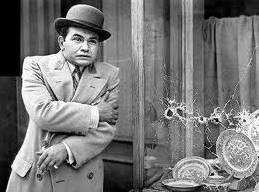 BANDELLO, RICO: Prohibition-era gangster in W.R. Burnett‘s hard-boiled novel Little Caesar (1929). The story is obviously based on the real-life career of Al Capone. In the 1930 film of the book he was played by Edward G. Robinson in a performance which turned the diminutive actor into a star. Bandello’s famous last line is “Mother of mercy, is this the end of Rico?”
BANDELLO, RICO: Prohibition-era gangster in W.R. Burnett‘s hard-boiled novel Little Caesar (1929). The story is obviously based on the real-life career of Al Capone. In the 1930 film of the book he was played by Edward G. Robinson in a performance which turned the diminutive actor into a star. Bandello’s famous last line is “Mother of mercy, is this the end of Rico?”
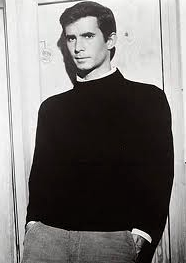 BATES, NORMAN: Insane murderer in charge of a lonely motel in Robert Bloch‘s novel Psycho (1959). Bates believes that he is his mother, and in a fit of sexual frenzy kills a young woman who has unknowingly aroused him. The story became the basis of one of Alfred Hitchcock’s most memorable films (1960) in which Anthony Perkins gave an admirably twitchy performance as Bates. Twenty years later Bates escapes from the hospital for the criminally insane and goes on the rampage again. These events are recounted in Psycho II, Bloch’s sequel to his original novel. The 1983 film directed by Richard Franklin was vaguely based on this second book also starred Anthony Perkins, as did a third movie, Psycho III (1986). Norman Bates early life is described in David Thomson’s 1985 collection of fictitious biographies, Suspects. Anthony Perkins returned yet again in the above-average Psycho IV (1990), in which Bates is invited to share memories of mom with a radio talk show host, but he fears that he may kill again for his beloved is impregnated with his child and Norman cannot let another ‘psycho’ loose upon a civilized world. In flashbacks, teenage Norman Bates is portrayed by Henry Thomas. In the controversial shot-by-shot 1998 remake, Vince Vaughn (an actor known for his comedy roles) played Norman.
BATES, NORMAN: Insane murderer in charge of a lonely motel in Robert Bloch‘s novel Psycho (1959). Bates believes that he is his mother, and in a fit of sexual frenzy kills a young woman who has unknowingly aroused him. The story became the basis of one of Alfred Hitchcock’s most memorable films (1960) in which Anthony Perkins gave an admirably twitchy performance as Bates. Twenty years later Bates escapes from the hospital for the criminally insane and goes on the rampage again. These events are recounted in Psycho II, Bloch’s sequel to his original novel. The 1983 film directed by Richard Franklin was vaguely based on this second book also starred Anthony Perkins, as did a third movie, Psycho III (1986). Norman Bates early life is described in David Thomson’s 1985 collection of fictitious biographies, Suspects. Anthony Perkins returned yet again in the above-average Psycho IV (1990), in which Bates is invited to share memories of mom with a radio talk show host, but he fears that he may kill again for his beloved is impregnated with his child and Norman cannot let another ‘psycho’ loose upon a civilized world. In flashbacks, teenage Norman Bates is portrayed by Henry Thomas. In the controversial shot-by-shot 1998 remake, Vince Vaughn (an actor known for his comedy roles) played Norman.
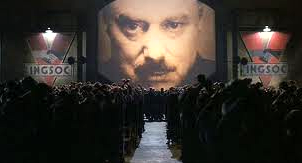 BIG BROTHER: Nameless dictator of Oceania in George Orwell‘s nightmarish dystopian novel Nineteen Eighty-Four (1949). The books hero, Winston Smith, learns to ‘love’ Big Brother, which is to obey him. A sequel by another hand is Nineteen Eighty-Five: A Historical Report/Hong Kong 2036, written by Hungarian author Gyorgy Dalos in 1982. This gives an account of the historical development of Oceania after Big Brother’s death. A small but pivotal role, Big Brother has been portrayed on television and film by Roy Oxley (1954), John Vernon (1956) and Bob Flag (1984).
BIG BROTHER: Nameless dictator of Oceania in George Orwell‘s nightmarish dystopian novel Nineteen Eighty-Four (1949). The books hero, Winston Smith, learns to ‘love’ Big Brother, which is to obey him. A sequel by another hand is Nineteen Eighty-Five: A Historical Report/Hong Kong 2036, written by Hungarian author Gyorgy Dalos in 1982. This gives an account of the historical development of Oceania after Big Brother’s death. A small but pivotal role, Big Brother has been portrayed on television and film by Roy Oxley (1954), John Vernon (1956) and Bob Flag (1984).
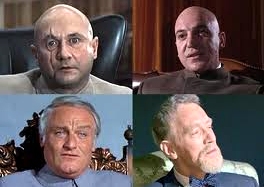 BLOFELD, ERNST STAVRO: from the James Bond series of novels and films created by Ian Fleming and Kevin McClory. An evil genius, he is the archenemy of the British Secret Service agent James Bond and head of the global criminal organisation SPECTRE with aspirations of world domination. SPECTRE deals in terrorism, revenge and extortion, most often potentially resulting in mass murder and annihilation in achieving its objectives. As head of the organisation, Blofeld is commonly referred to as Number One, a sign of authority and respect from his henchmen, and an official numerical position given to members of SPECTRE. Over the decades Blofeld has been portrayed by many actors, including Anthony Dawson, Eric Pohlmann, Donald Pleasence, Telly Savalas, Charles Gray, John Hollis, Robert Rietty and Max von Sydow.
BLOFELD, ERNST STAVRO: from the James Bond series of novels and films created by Ian Fleming and Kevin McClory. An evil genius, he is the archenemy of the British Secret Service agent James Bond and head of the global criminal organisation SPECTRE with aspirations of world domination. SPECTRE deals in terrorism, revenge and extortion, most often potentially resulting in mass murder and annihilation in achieving its objectives. As head of the organisation, Blofeld is commonly referred to as Number One, a sign of authority and respect from his henchmen, and an official numerical position given to members of SPECTRE. Over the decades Blofeld has been portrayed by many actors, including Anthony Dawson, Eric Pohlmann, Donald Pleasence, Telly Savalas, Charles Gray, John Hollis, Robert Rietty and Max von Sydow.
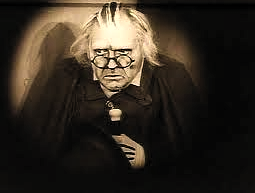 CALIGARI, DOCTOR: Mysterious villain of the celebrated German film The Cabinet Of Doctor Caligari (1919) played by Werner Krauss. He is a magician and hypnotist who uses a sleepwalker to commit murderers on his behalf. A 1962 American film entitled The Cabinet Of Doctor Caligari starred Dan O’Herlihy as a psychiatrist named Caligari, but it bears very little relation to the 1919 silent classic. Madeleine Reynal played a female version of the doctor in a 1989 film, and in 2005 was given new life (and a first name) by actor Daamen J. Krall.
CALIGARI, DOCTOR: Mysterious villain of the celebrated German film The Cabinet Of Doctor Caligari (1919) played by Werner Krauss. He is a magician and hypnotist who uses a sleepwalker to commit murderers on his behalf. A 1962 American film entitled The Cabinet Of Doctor Caligari starred Dan O’Herlihy as a psychiatrist named Caligari, but it bears very little relation to the 1919 silent classic. Madeleine Reynal played a female version of the doctor in a 1989 film, and in 2005 was given new life (and a first name) by actor Daamen J. Krall.
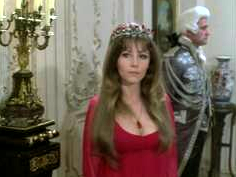 CARMILLA: Beautiful female vampire in J. Sheridan Le Fanu‘s novella Carmilla (included in the 1872 collection In A Glass Darkly) predates Bram Stoker’s Dracula by twenty-five years and has been adapted many times for cinema, including Vampyr (1931) with Sybille Schmitz, Blood And Roses (1960) with Elsa Martinelli, and The Vampire Lovers (1970) with Ingrid Pitt. More recently, 2009 saw two adaptations, a faithful romance called Carmilla (2009), and a comedy with the rather dubious title of Lesbian Vampire Killers (2009).
CARMILLA: Beautiful female vampire in J. Sheridan Le Fanu‘s novella Carmilla (included in the 1872 collection In A Glass Darkly) predates Bram Stoker’s Dracula by twenty-five years and has been adapted many times for cinema, including Vampyr (1931) with Sybille Schmitz, Blood And Roses (1960) with Elsa Martinelli, and The Vampire Lovers (1970) with Ingrid Pitt. More recently, 2009 saw two adaptations, a faithful romance called Carmilla (2009), and a comedy with the rather dubious title of Lesbian Vampire Killers (2009).
 CTHULHU: Terrifying god of the elder days created by American horror author H.P. Lovecraft for such magazine stories as The Call Of Cthulhu (1928). He (or it) is the focus of the so-called Cthulhu Mythos, as elaborated after Lovecraft’s death by August Derleth and other writers. Books by Derleth include The Lurker At The Threshold (1945 based on notes left by Lovecraft), The Mask Of Cthulhu (1958) and The Trail Of Cthulhu (1962). The anthology Tales Of The Cthulhu Mythos (1969 edited by Derleth) contains stories by various hands. Authors who have contributed to the Mythos include Frank Belknap Long, Robert E. Howard, Clark Ashton Smith, Robert Bloch, Henry Kuttner, Ramsey Campbell, Brian Lumley, Colin Wilson and Lin Carter. There have been many films, both official and unofficial, influenced by Cthulhu and the inventions of H.P. Lovecraft, more recently City Of The Living Dead (1980), The Beyond (1981) The Evil Dead (1981) and its sequels, Cast A Deadly Spell (1991), In The Mouth Of Madness (1995), Dagon (2001), Alone In The Dark (2005), Mortuary (2005). The story was adapted as a silent movie of the same name in 2005 by the H.P. Lovecraft Historical Society.
CTHULHU: Terrifying god of the elder days created by American horror author H.P. Lovecraft for such magazine stories as The Call Of Cthulhu (1928). He (or it) is the focus of the so-called Cthulhu Mythos, as elaborated after Lovecraft’s death by August Derleth and other writers. Books by Derleth include The Lurker At The Threshold (1945 based on notes left by Lovecraft), The Mask Of Cthulhu (1958) and The Trail Of Cthulhu (1962). The anthology Tales Of The Cthulhu Mythos (1969 edited by Derleth) contains stories by various hands. Authors who have contributed to the Mythos include Frank Belknap Long, Robert E. Howard, Clark Ashton Smith, Robert Bloch, Henry Kuttner, Ramsey Campbell, Brian Lumley, Colin Wilson and Lin Carter. There have been many films, both official and unofficial, influenced by Cthulhu and the inventions of H.P. Lovecraft, more recently City Of The Living Dead (1980), The Beyond (1981) The Evil Dead (1981) and its sequels, Cast A Deadly Spell (1991), In The Mouth Of Madness (1995), Dagon (2001), Alone In The Dark (2005), Mortuary (2005). The story was adapted as a silent movie of the same name in 2005 by the H.P. Lovecraft Historical Society.
 DALEKS: Tin-can aliens on wheels whose monotonous voices, threatening to ‘exterminate’ all who cross their path, became one of the most familiar sounds on British television. They were invented by scriptwriter Terry Nation for the BBC series Doctor Who (1963). The Daleks were not the sole reason for the show’s early success, but they did push the audience from three million to eight million viewers.
DALEKS: Tin-can aliens on wheels whose monotonous voices, threatening to ‘exterminate’ all who cross their path, became one of the most familiar sounds on British television. They were invented by scriptwriter Terry Nation for the BBC series Doctor Who (1963). The Daleks were not the sole reason for the show’s early success, but they did push the audience from three million to eight million viewers.
 DE VIL, CRUELLA: Aristocratic villainess of Dodie Smith‘s children’s novel One Hundred And One Dalmations (1956). She kidnaps a huge brood of puppies in order to turn their fur into coats for humans. The story was made into a full-length animated film by the Disney organisation (1961), described by critic Leslie Halliwell as “Disney’s last really splendid feature cartoon”, since when the name of Cruella De Vil has been a byword for female heartlessness. In Disney’s 1996 live-action remake of the animated film, 101 Dalmatians, and its 2000 sequel, 102 Dalmatians, Cruella was played by Glenn Close. In some languages (such as Spanish) where her last name has been left as De Vil, but is not similar to their equivalent of devil, it is taken to be a play on their equivalent of ‘vile’ or ‘villain’.
DE VIL, CRUELLA: Aristocratic villainess of Dodie Smith‘s children’s novel One Hundred And One Dalmations (1956). She kidnaps a huge brood of puppies in order to turn their fur into coats for humans. The story was made into a full-length animated film by the Disney organisation (1961), described by critic Leslie Halliwell as “Disney’s last really splendid feature cartoon”, since when the name of Cruella De Vil has been a byword for female heartlessness. In Disney’s 1996 live-action remake of the animated film, 101 Dalmatians, and its 2000 sequel, 102 Dalmatians, Cruella was played by Glenn Close. In some languages (such as Spanish) where her last name has been left as De Vil, but is not similar to their equivalent of devil, it is taken to be a play on their equivalent of ‘vile’ or ‘villain’.
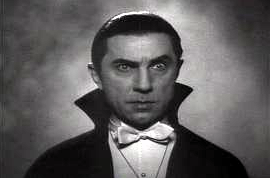 DRACULA, VLAD: Near-immortal Transylvanian vampire in Bram Stoker‘s immensely successful novel Dracula (1897). Like the vampire bat and the Nosferatu of Romanian legend, he feeds on blood, preferably the blood of beautiful young women such as Lucy Westenra and her friend Mina Harker (two of the novel’s several narrators). It takes all the arcane skills of vampire-hunter Doctor Abraham Van Helsing, with his deployment of crucifixes, garlic and wooden stakes, finally to defeat Dracula. The undead Count is one of the half-dozen best-known fictional characters of modern times, and he has pursued a long and active career on the stage, in films, on television, in comics, advertising, merchandising, merchandising, jokes and popular lore. Stoker revived him for just one story, included in Dracula’s Guest And Other Stories (1914), but many others have been tempted to pen sequels (or imitations). The first notable film to be based on Stoker’s novel was the German Nosferatu (1921). It starred Max Schreck as the vampire, but for copyright reasons the character was not named Dracula in this production. A stage adaptation of Dracula, by Hamilton Deane and John Balderston, opened in New York in 1927 with the Hungarian actor Bela Lugosi in the lead. Lugosi was invited to perpetuate the role in the film of the play (1931) and the success of this movie led to an entire Dracula film industry. Direct Hollywood sequels included Dracula’s Daughter (1936) with Gloria Holden as the eponymous lady, Son Of Dracula (1943) with Lon Chaney Junior as said son, and House Of Dracula (1945) with John Carradine. Later films include the British-made Dracula aka Horror Of Dracula (1958) and at least half-a-dozen sequels with Christopher Lee as the Count. Other notable productions include the made-for-TV movies Dracula (1973) with Jack Palance and Count Dracula (1977) with Louis Jordan, and the feature film Dracula (1979) with Frank Langella as a smoothly romantic version of the Count. In addition to all the forgoing, there have been scores of foreign-language films, ranging from a Hungarian Drakula made in the twenties, to the Greek Dracula Tan Exarchia (1983). Nosferatu itself was remade in Germany (1979) with Klaus Kinski giving a notably ghoulish performance. 1992 saw a version produced and directed by Francis Ford Coppola, starring Gary Oldman. Despite mixed reviews, the film was a box-office hit and won three Academy Awards in 1993.
DRACULA, VLAD: Near-immortal Transylvanian vampire in Bram Stoker‘s immensely successful novel Dracula (1897). Like the vampire bat and the Nosferatu of Romanian legend, he feeds on blood, preferably the blood of beautiful young women such as Lucy Westenra and her friend Mina Harker (two of the novel’s several narrators). It takes all the arcane skills of vampire-hunter Doctor Abraham Van Helsing, with his deployment of crucifixes, garlic and wooden stakes, finally to defeat Dracula. The undead Count is one of the half-dozen best-known fictional characters of modern times, and he has pursued a long and active career on the stage, in films, on television, in comics, advertising, merchandising, merchandising, jokes and popular lore. Stoker revived him for just one story, included in Dracula’s Guest And Other Stories (1914), but many others have been tempted to pen sequels (or imitations). The first notable film to be based on Stoker’s novel was the German Nosferatu (1921). It starred Max Schreck as the vampire, but for copyright reasons the character was not named Dracula in this production. A stage adaptation of Dracula, by Hamilton Deane and John Balderston, opened in New York in 1927 with the Hungarian actor Bela Lugosi in the lead. Lugosi was invited to perpetuate the role in the film of the play (1931) and the success of this movie led to an entire Dracula film industry. Direct Hollywood sequels included Dracula’s Daughter (1936) with Gloria Holden as the eponymous lady, Son Of Dracula (1943) with Lon Chaney Junior as said son, and House Of Dracula (1945) with John Carradine. Later films include the British-made Dracula aka Horror Of Dracula (1958) and at least half-a-dozen sequels with Christopher Lee as the Count. Other notable productions include the made-for-TV movies Dracula (1973) with Jack Palance and Count Dracula (1977) with Louis Jordan, and the feature film Dracula (1979) with Frank Langella as a smoothly romantic version of the Count. In addition to all the forgoing, there have been scores of foreign-language films, ranging from a Hungarian Drakula made in the twenties, to the Greek Dracula Tan Exarchia (1983). Nosferatu itself was remade in Germany (1979) with Klaus Kinski giving a notably ghoulish performance. 1992 saw a version produced and directed by Francis Ford Coppola, starring Gary Oldman. Despite mixed reviews, the film was a box-office hit and won three Academy Awards in 1993.
 EWING, J.R: Machiavellian businessman in the American television series Dallas (from 1979). Full name John Ross Ewing, son of Jock and Eleanor Ewing, he is brother of the handsome Bobby and husband to the beautiful but erring Sue Ellen. J.R. is heir to a Texas oil fortune, and he is determined to keep every penny of it. Played by Larry Hagman, J.R. is a man you love to hate – despite which he became astonishingly popular in the early eighties, particularly in Britain. During the 1985-1986 season viewers feared that J.R. was becoming too nice, the show’s scriptwriters realised all was not well, and in the following season J.R. was just as mean and nasty as he’d ever been. There was also a made-for-television movie prequel, Dallas: The Early Years (1986) which includes glimpses of J.R. as a teenager.
EWING, J.R: Machiavellian businessman in the American television series Dallas (from 1979). Full name John Ross Ewing, son of Jock and Eleanor Ewing, he is brother of the handsome Bobby and husband to the beautiful but erring Sue Ellen. J.R. is heir to a Texas oil fortune, and he is determined to keep every penny of it. Played by Larry Hagman, J.R. is a man you love to hate – despite which he became astonishingly popular in the early eighties, particularly in Britain. During the 1985-1986 season viewers feared that J.R. was becoming too nice, the show’s scriptwriters realised all was not well, and in the following season J.R. was just as mean and nasty as he’d ever been. There was also a made-for-television movie prequel, Dallas: The Early Years (1986) which includes glimpses of J.R. as a teenager.
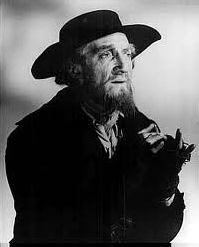 FAGIN: Master of the London pick-pockets, including the Artful Dodger and young Oliver, in the Charles Dickens novel Oliver Twist (1838). After Shakespeare’s Shylock, Fagin is perhaps the best-known stereotype of the villainous Jew in English literature. In films he has been played by Alec Guinness (1948) and Ron Moody (1968), and on television he has been played by Eric Porter in a BBC serialisation of the novel (1985). Other portrayals include Richard Dreyfuss in 1997, Ben Kingsley in 2005, Timothy Spall in 2007, and in 2008 the musical Oliver! was revived in London with Rowan Atkinson playing Fagin.
FAGIN: Master of the London pick-pockets, including the Artful Dodger and young Oliver, in the Charles Dickens novel Oliver Twist (1838). After Shakespeare’s Shylock, Fagin is perhaps the best-known stereotype of the villainous Jew in English literature. In films he has been played by Alec Guinness (1948) and Ron Moody (1968), and on television he has been played by Eric Porter in a BBC serialisation of the novel (1985). Other portrayals include Richard Dreyfuss in 1997, Ben Kingsley in 2005, Timothy Spall in 2007, and in 2008 the musical Oliver! was revived in London with Rowan Atkinson playing Fagin.
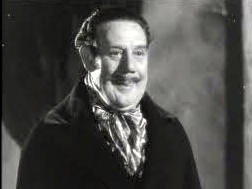 FOSCO, COUNT: Full name Count Isodor Ottavio Baldassare Fosco, an Italian gentleman living in England, the apparently amiable villain of Wilkie Collins‘ mystery novel The Woman In White (1860), and is probably the first overweight villain in English literature. The plot concerns the unjust incarceration of an heiress, Laura Fairlie, by the avaricious Sir Percival Glyde aided and abetted by the smoothly duplicitous Count Fosco. The story was turned into a stage play in 1871 and filmed in 1912, 1913, 1918 and 1929. Sidney Greenstreet played Fosco in the 1948 Hollywood version of the novel, and in the 1982 British television miniseries he was played by Alan Badel. More recently Fosco was played by Simon Callow in a 1997 television movie.
FOSCO, COUNT: Full name Count Isodor Ottavio Baldassare Fosco, an Italian gentleman living in England, the apparently amiable villain of Wilkie Collins‘ mystery novel The Woman In White (1860), and is probably the first overweight villain in English literature. The plot concerns the unjust incarceration of an heiress, Laura Fairlie, by the avaricious Sir Percival Glyde aided and abetted by the smoothly duplicitous Count Fosco. The story was turned into a stage play in 1871 and filmed in 1912, 1913, 1918 and 1929. Sidney Greenstreet played Fosco in the 1948 Hollywood version of the novel, and in the 1982 British television miniseries he was played by Alan Badel. More recently Fosco was played by Simon Callow in a 1997 television movie.
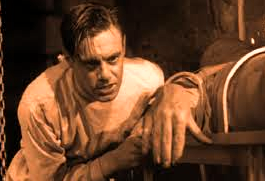 FRANKENSTEIN, VICTOR: Scientific researcher who creates a man, which he disowns – and which then turns on him, killing those he loves and making his life a misery. This fable of over-reaching ambition and fatal retribution was invented by the nineteen-year-old Mary Shelley in her novel Frankenstein, Or The Modern Prometheus (1818). The name Frankenstein has become part of modern mythology, and in parlance the scientist, Victor Frankenstein, is often confused with his creation, the monster sewn together from bits of various corpses. the macabre story of Frankenstein’s hubris and its monstrous nemesis has been immensely influential, and many have claimed it as the inspiration for most subsequent science fiction. Within a few years of the book’s first publication it had become a favourite in the form of sensationalised stage adaptations. Such nineteenth-century melodramas are the direct ancestors of the twentieth-century movie versions of the story. Early film versions of the story were made in 1910 and 1915, but our latter-day conceptions of Frankenstein and his monster owe almost everything to the first Hollywood talkie version in 1931. This starred Colin Clive as the scientist and Boris Karloff as his creation. Karloff’s shambling creature, both menacing and pathetic, has never been forgotten, it is part of the indelible visual iconography of the twentieth century. The movie spawned countless sequels including The Bride Of Frankenstein (1935), The Son Of Frankenstein (1939), The Ghost Of Frankenstein (1942) and so on. More recent examples are the British remakes, beginning with The Curse Of Frankenstein (1957), which starred Peter Cushing as Frankenstein and Christopher Lee as the monster. There have also been many parodies, ranging from Abbott And Costello Meet Frankenstein (1948) to Young Frankenstein (1974). Two American television movie versions were made the same year, one of which had the benefit of a script by Christopher Isherwood, was rather inaccurately titled Frankenstein: The True Story (1974). A 1984 British independent television version had Robert Powell as Frankenstein and David Warner as his creature, and a decade later Kenneth Brannagh played Frankenstein with Robert De Niro as the monster in a monstrously-budgeted Hollywood sequel that was declared a box-office flop.
FRANKENSTEIN, VICTOR: Scientific researcher who creates a man, which he disowns – and which then turns on him, killing those he loves and making his life a misery. This fable of over-reaching ambition and fatal retribution was invented by the nineteen-year-old Mary Shelley in her novel Frankenstein, Or The Modern Prometheus (1818). The name Frankenstein has become part of modern mythology, and in parlance the scientist, Victor Frankenstein, is often confused with his creation, the monster sewn together from bits of various corpses. the macabre story of Frankenstein’s hubris and its monstrous nemesis has been immensely influential, and many have claimed it as the inspiration for most subsequent science fiction. Within a few years of the book’s first publication it had become a favourite in the form of sensationalised stage adaptations. Such nineteenth-century melodramas are the direct ancestors of the twentieth-century movie versions of the story. Early film versions of the story were made in 1910 and 1915, but our latter-day conceptions of Frankenstein and his monster owe almost everything to the first Hollywood talkie version in 1931. This starred Colin Clive as the scientist and Boris Karloff as his creation. Karloff’s shambling creature, both menacing and pathetic, has never been forgotten, it is part of the indelible visual iconography of the twentieth century. The movie spawned countless sequels including The Bride Of Frankenstein (1935), The Son Of Frankenstein (1939), The Ghost Of Frankenstein (1942) and so on. More recent examples are the British remakes, beginning with The Curse Of Frankenstein (1957), which starred Peter Cushing as Frankenstein and Christopher Lee as the monster. There have also been many parodies, ranging from Abbott And Costello Meet Frankenstein (1948) to Young Frankenstein (1974). Two American television movie versions were made the same year, one of which had the benefit of a script by Christopher Isherwood, was rather inaccurately titled Frankenstein: The True Story (1974). A 1984 British independent television version had Robert Powell as Frankenstein and David Warner as his creature, and a decade later Kenneth Brannagh played Frankenstein with Robert De Niro as the monster in a monstrously-budgeted Hollywood sequel that was declared a box-office flop.
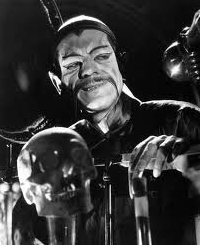 FU MANCHU: Chinese master villain, head of the secret society known as the Si-Fan. A cold-eyed calculating expert in conspiracy, torture and murder, Fu operates all over the globe, his apparent aim the ultimate mastery of the world. However, his nefarious plans are repeatedly foiled by the stout Britisher Dennis Nayland Smith. Fu was created by Sax Rohmer in a series of short stories which ran in Story-Teller magazine from 1912. These were soon cobbled together into best-selling novels. For several years Rohmer tried to escape from the loom of his most famous character, but following the success of Fu Manchu in silent films during the twenties he was driven to resume the series and to continue it throughout the remainder of his long writing career. Actor Harry Agar Lyons first played Fu Manchu in the short silent films of the twenties. The first talkie to feature the devil doctor, The Mysterious Doctor Fu Manchu (1929) starred Warner Oland, who repeated the role in two subsequent films. However, the most memorable Fu on celluloid proved to be Boris Karloff in The Mask Of Fu Manchu (1932). He was followed by Henry Brandon, who took on the role in the serial Drums Of Fu Manchu (1939). Decades later, a new series of five Fu Manchu films was made in Britain, with Christopher Lee filling the part splendidly – The Face Of Fu Manchu (1965) was the first of these, and The Castle Of Fu Manchu (1970) was the last. An unsuccessful parody, The Fiendish Plot Of Doctor Fu Manchu (1980) starred Peter Sellers in his final role. Except for the occasional parody, it seems the seminal super-villain Fu Manchu has been forgotten by modern movie audiences.
FU MANCHU: Chinese master villain, head of the secret society known as the Si-Fan. A cold-eyed calculating expert in conspiracy, torture and murder, Fu operates all over the globe, his apparent aim the ultimate mastery of the world. However, his nefarious plans are repeatedly foiled by the stout Britisher Dennis Nayland Smith. Fu was created by Sax Rohmer in a series of short stories which ran in Story-Teller magazine from 1912. These were soon cobbled together into best-selling novels. For several years Rohmer tried to escape from the loom of his most famous character, but following the success of Fu Manchu in silent films during the twenties he was driven to resume the series and to continue it throughout the remainder of his long writing career. Actor Harry Agar Lyons first played Fu Manchu in the short silent films of the twenties. The first talkie to feature the devil doctor, The Mysterious Doctor Fu Manchu (1929) starred Warner Oland, who repeated the role in two subsequent films. However, the most memorable Fu on celluloid proved to be Boris Karloff in The Mask Of Fu Manchu (1932). He was followed by Henry Brandon, who took on the role in the serial Drums Of Fu Manchu (1939). Decades later, a new series of five Fu Manchu films was made in Britain, with Christopher Lee filling the part splendidly – The Face Of Fu Manchu (1965) was the first of these, and The Castle Of Fu Manchu (1970) was the last. An unsuccessful parody, The Fiendish Plot Of Doctor Fu Manchu (1980) starred Peter Sellers in his final role. Except for the occasional parody, it seems the seminal super-villain Fu Manchu has been forgotten by modern movie audiences.
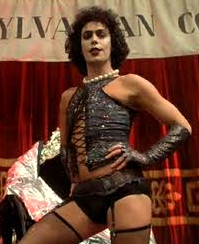 FURTER, FRANK N: Transvestite villain of The Rocky Horror Show, a musical celebration of all things kinky and Transylvanian. He ‘entertains’ an innocent couple named Brad and Janet in his old dark house. With songs and lyrics by New Zealander Richard O’Brien, the show became a cult success on stage in Britain. It was soon transferred to the big screen: The Rocky Horror Picture Show (1975) was directed by Australian Jim Sharman and starred Tim Curry as Frank N. Furter. A semi-sequel to the film is Shock Treatment (1981) also directed by Sharman.
FURTER, FRANK N: Transvestite villain of The Rocky Horror Show, a musical celebration of all things kinky and Transylvanian. He ‘entertains’ an innocent couple named Brad and Janet in his old dark house. With songs and lyrics by New Zealander Richard O’Brien, the show became a cult success on stage in Britain. It was soon transferred to the big screen: The Rocky Horror Picture Show (1975) was directed by Australian Jim Sharman and starred Tim Curry as Frank N. Furter. A semi-sequel to the film is Shock Treatment (1981) also directed by Sharman.
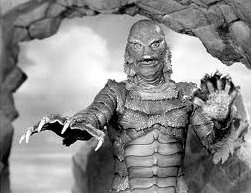 GILL-MAN: Man-like aquatic monster which is found far up the river Amazon, in the Hollywood movie The Creature From The Black Lagoon (1954). The Gill-Man was played by stuntman Ricou Browning in a rubber suit. The film was a commercial success and spawned two sequels, Revenge Of The Creature (1955) and The Creature Walks Among Us (1956). The Gill-Man’s popularity as an iconic monster of cinema has led to numerous cameo appearances, including an episode of television’s The Munsters (1964), the movie The Monster Squad (1987) and even a recent stage musical based on the original film.
GILL-MAN: Man-like aquatic monster which is found far up the river Amazon, in the Hollywood movie The Creature From The Black Lagoon (1954). The Gill-Man was played by stuntman Ricou Browning in a rubber suit. The film was a commercial success and spawned two sequels, Revenge Of The Creature (1955) and The Creature Walks Among Us (1956). The Gill-Man’s popularity as an iconic monster of cinema has led to numerous cameo appearances, including an episode of television’s The Munsters (1964), the movie The Monster Squad (1987) and even a recent stage musical based on the original film.
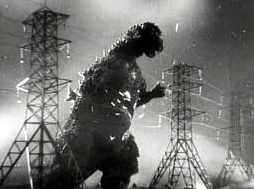 GODZILLA: Known as Gojira in Japanese – an enormous (two hundred feet tall) dinosaur that threatens to destroy Tokyo, in the movie Godzilla King Of The Monsters (1955). The creature is awakened from its sleep, deep in the primordial ooze, by an H-bomb test. An earlier American film which used much the same idea is The Beast From 20,000 Fathoms (1953), inspired by a story by Ray Bradbury. Godzilla has appeared in many subsequent Japanese films and television cartoons. Movie sequels include King Kong Versus Godzilla (1962), Godzilla Versus The Thing (1964) and Destroy All Monsters (1969). 1998 saw a big-budget American remake – despite the high-level quality of contemporary special effects, filmmakers Roland Emmerich and Dean Devlin wisely remained with tradition and insisted on using a stuntman in an elaborate suit to portray the giant Godzilla in many scenes.
GODZILLA: Known as Gojira in Japanese – an enormous (two hundred feet tall) dinosaur that threatens to destroy Tokyo, in the movie Godzilla King Of The Monsters (1955). The creature is awakened from its sleep, deep in the primordial ooze, by an H-bomb test. An earlier American film which used much the same idea is The Beast From 20,000 Fathoms (1953), inspired by a story by Ray Bradbury. Godzilla has appeared in many subsequent Japanese films and television cartoons. Movie sequels include King Kong Versus Godzilla (1962), Godzilla Versus The Thing (1964) and Destroy All Monsters (1969). 1998 saw a big-budget American remake – despite the high-level quality of contemporary special effects, filmmakers Roland Emmerich and Dean Devlin wisely remained with tradition and insisted on using a stuntman in an elaborate suit to portray the giant Godzilla in many scenes.
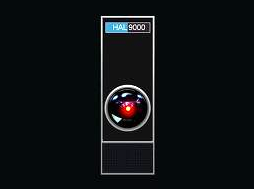 HAL 9000: The first computer to really achieve the status of famous fictional villain. HAL is an artificial intelligence aboard the spacecraft Discovery, sent with a five-man crew to locate the origin of an alien monolith found on the Moon. HAL malfunctions, attempts to take total control of the mission, and murders four of the crew by devious means. The remaining human, David Bowman, dismantles the computer’s memory, effectively ‘killing’ HAL. The scene in which HAL regresses to babbling mental infancy, singing Daisy Daisy, is oddly poignant. All this is recounted in Arthur Clarke‘s novel 2001: A Space Odyssey (1968) and the spectacular film which was released simultaneously with it (co-scripted, produced and directed by Stanley Kubrick). Years later Clarke wrote a sequel, 2010: Odyssey Two (1982) in which HAL is reactivated by the crew of another space vessel who are trying to unravel the mystery of what happened to the Discovery. This in turn was filmed by Peter Hyams in 1984. There were two further sequels that have not yet been adapted to the cinema – 2061: Odyssey Three and 3001: The Final Odyssey.
HAL 9000: The first computer to really achieve the status of famous fictional villain. HAL is an artificial intelligence aboard the spacecraft Discovery, sent with a five-man crew to locate the origin of an alien monolith found on the Moon. HAL malfunctions, attempts to take total control of the mission, and murders four of the crew by devious means. The remaining human, David Bowman, dismantles the computer’s memory, effectively ‘killing’ HAL. The scene in which HAL regresses to babbling mental infancy, singing Daisy Daisy, is oddly poignant. All this is recounted in Arthur Clarke‘s novel 2001: A Space Odyssey (1968) and the spectacular film which was released simultaneously with it (co-scripted, produced and directed by Stanley Kubrick). Years later Clarke wrote a sequel, 2010: Odyssey Two (1982) in which HAL is reactivated by the crew of another space vessel who are trying to unravel the mystery of what happened to the Discovery. This in turn was filmed by Peter Hyams in 1984. There were two further sequels that have not yet been adapted to the cinema – 2061: Odyssey Three and 3001: The Final Odyssey.
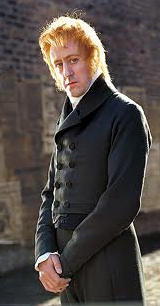 HEEP, URIAH: Repulsive toadying villain, a creature of feigning humbleness, in the Charles Dickens novel David Copperfield (1850). He blackmails his virtuous employer Mister Wickfield, but luckily the trusty Wilkins Micawber finds him out. In films and television Uriah Heep has been played by Roland Young (1935), Ron Moody (1970), Martin Jarvis (1975), Paul Brightwell (1986), Nicholas Lyndhurst (1999) and Frank MacCusker (2000), among others.
HEEP, URIAH: Repulsive toadying villain, a creature of feigning humbleness, in the Charles Dickens novel David Copperfield (1850). He blackmails his virtuous employer Mister Wickfield, but luckily the trusty Wilkins Micawber finds him out. In films and television Uriah Heep has been played by Roland Young (1935), Ron Moody (1970), Martin Jarvis (1975), Paul Brightwell (1986), Nicholas Lyndhurst (1999) and Frank MacCusker (2000), among others.
 HOOK, CAPTAIN JAMES: The antagonist of J. M. Barrie‘s play Peter Pan, or the Boy Who Wouldn’t Grow Up and its various adaptations. The character is a villainous pirate captain of the Jolly Roger galleon, and lord of the pirate harbour in Neverland, where he is widely feared. Most importantly, he is the nemesis of Peter Pan. It is said that Hook was Blackbeard’s boatswain, and that he was the only man Long John Silver ever feared. Hook wears an iron hook in place of his hand, which was cut off by Peter Pan and eaten by a crocodile. Hook hates Peter obsessively and lives for the day he can make Peter walk the plank. Over the decades Captain Hook has been portrayed by many interesting actors including Hans Conried (1953), Boris Karloff (1960), Danny Kaye (1976), Tim Curry (1990), Dustin Hoffman (1991) Corey Burton (2002) and Ian McShane (2007).
HOOK, CAPTAIN JAMES: The antagonist of J. M. Barrie‘s play Peter Pan, or the Boy Who Wouldn’t Grow Up and its various adaptations. The character is a villainous pirate captain of the Jolly Roger galleon, and lord of the pirate harbour in Neverland, where he is widely feared. Most importantly, he is the nemesis of Peter Pan. It is said that Hook was Blackbeard’s boatswain, and that he was the only man Long John Silver ever feared. Hook wears an iron hook in place of his hand, which was cut off by Peter Pan and eaten by a crocodile. Hook hates Peter obsessively and lives for the day he can make Peter walk the plank. Over the decades Captain Hook has been portrayed by many interesting actors including Hans Conried (1953), Boris Karloff (1960), Danny Kaye (1976), Tim Curry (1990), Dustin Hoffman (1991) Corey Burton (2002) and Ian McShane (2007).
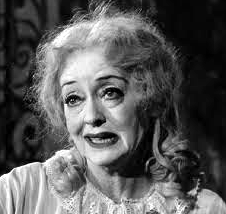 HUDSON, ‘BABY’ JANE: Grotesque aging film actress, a former child star, played by Bette Davis in the film Whatever Happened To Baby Jane? (1962) directed by Robert Aldrich. This unpleasant story, in which Baby Jane torments her handicapped sister, has been described as a ‘sado-gerontophilic exercise in Hollywood Grand Guignol’. Lynn Redgrave played Baby Jane opposite her real-life sister Vanessa in a 1991 made-for-television version. The script is based on the novel by Henry Farrell.
HUDSON, ‘BABY’ JANE: Grotesque aging film actress, a former child star, played by Bette Davis in the film Whatever Happened To Baby Jane? (1962) directed by Robert Aldrich. This unpleasant story, in which Baby Jane torments her handicapped sister, has been described as a ‘sado-gerontophilic exercise in Hollywood Grand Guignol’. Lynn Redgrave played Baby Jane opposite her real-life sister Vanessa in a 1991 made-for-television version. The script is based on the novel by Henry Farrell.
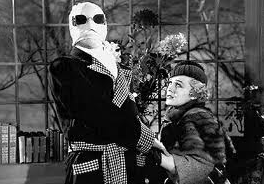 INVISIBLE MAN, THE: Doctor Griffin, the scientist who discovers the secret of invisibility and is driven mad by the consequences, in the H.G. Wells novel The Invisible Man (1987). The 1933 film of the book starred Claude Rains, whose face becomes visible only at the end of the movie. A spate of ‘Invisible Man’ films followed the success of this adaptation of Wells’ original, including The Invisible Man Returns (1940), The Invisible Man’s Revenge (1944) and such parodies as Abbott And Costello Meet The Invisible Man (1951). There have been two television series called The Invisible Man, the first made in Britain in the late fifties owed very little to Wells’ story and the second, made in America in the mid-seventies, owed absolutely nothing at all to the original, in which David McCallum starred as an invisible scientist-turned-government agent. Since then, an extremely faithful version of Wells’ novel was serialised in six parts on BBC TV in 1984 starring Pip Donaghy as the unhappy Doctor Griffin.
INVISIBLE MAN, THE: Doctor Griffin, the scientist who discovers the secret of invisibility and is driven mad by the consequences, in the H.G. Wells novel The Invisible Man (1987). The 1933 film of the book starred Claude Rains, whose face becomes visible only at the end of the movie. A spate of ‘Invisible Man’ films followed the success of this adaptation of Wells’ original, including The Invisible Man Returns (1940), The Invisible Man’s Revenge (1944) and such parodies as Abbott And Costello Meet The Invisible Man (1951). There have been two television series called The Invisible Man, the first made in Britain in the late fifties owed very little to Wells’ story and the second, made in America in the mid-seventies, owed absolutely nothing at all to the original, in which David McCallum starred as an invisible scientist-turned-government agent. Since then, an extremely faithful version of Wells’ novel was serialised in six parts on BBC TV in 1984 starring Pip Donaghy as the unhappy Doctor Griffin.
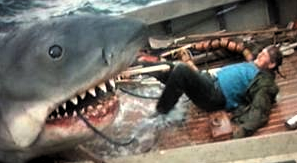 JAWS: Nickname of the great white shark in Peter Benchley‘s 1974 novel Jaws. The 1975 film directed by Steven Spielberg was even more of a popular success than the book, and the name ‘Jaws’ entered the language. For example, the metal-toothed villain played by Richard Kiel in the James Bond film The Spy Who Loved Me (1977) was known as Jaws. The sequels to the film Jaws were Jaws II (1978), Jaws 3-D (1983), and Jaws The Revenge (1987), each of which featured yet another monstrous fish intent on snapping off unwary swimmer’s legs.
JAWS: Nickname of the great white shark in Peter Benchley‘s 1974 novel Jaws. The 1975 film directed by Steven Spielberg was even more of a popular success than the book, and the name ‘Jaws’ entered the language. For example, the metal-toothed villain played by Richard Kiel in the James Bond film The Spy Who Loved Me (1977) was known as Jaws. The sequels to the film Jaws were Jaws II (1978), Jaws 3-D (1983), and Jaws The Revenge (1987), each of which featured yet another monstrous fish intent on snapping off unwary swimmer’s legs.
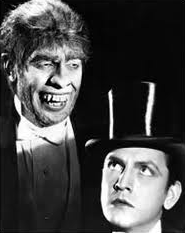 JEKYLL, HENRY: Virtuous doctor who brews a medicinal potion which transforms him into the villainous Edward Hyde, in Robert Louis Stevenson’s novella The Strange Case Of Doctor Jekyll And Mister Hyde (1886). This remarkably Freudian fantasy of a split personality has become one of the myths of our age. More recent sequels by other hands are Doctor Jekyll And Mister Holmes (1979) by Loren Estelman, wherein Jekyll meets the most famous of his fictional contemporaries, and Valerie Martin’s Mary Reilly (1990) in which the story is retold by Jekyll’s maid. There were various theatrical adaptations of Doctor Jekyll And Mister Hyde from 1888, followed by seven silent movie versions made between 1908 and 1921, the last and most famous of these starred John Barrymore. Later films include Doctor Jekyll And Mister Hyde (1931) starring Fredric March and again in 1941 with Spencer Tracy, Abbott And Costello Meet Doctor Jekyll And Mister Hyde (1953) with Boris Karloff, The Two Faces Of Doctor Jekyll with Paul Massie. the tran-sexual variant Doctor Jekyll And Sister Hyde (1970) with Ralph Bates, and many more. A 1981 British television movie of Stevenson’s story had David Hemmings as Doctor Jekyll. 1990 gave us the American Jekyll, a four-hour, two-part, made-for-television film starring Michael Caine in the title roles. 1996 saw John Malkovich as the good doctor in the film adaptation of the novel Mary Reilly. Most recently, The League Of Extraordinary Gentlemen (2003) featured Jason Flemyng as both Doctor Jekyll And Mister Hyde, and in Van Helsing (2004) Robbie Coltrane provides the voice of Hyde, who Van Helsing unintentionally kills when pursuing him through Paris.
JEKYLL, HENRY: Virtuous doctor who brews a medicinal potion which transforms him into the villainous Edward Hyde, in Robert Louis Stevenson’s novella The Strange Case Of Doctor Jekyll And Mister Hyde (1886). This remarkably Freudian fantasy of a split personality has become one of the myths of our age. More recent sequels by other hands are Doctor Jekyll And Mister Holmes (1979) by Loren Estelman, wherein Jekyll meets the most famous of his fictional contemporaries, and Valerie Martin’s Mary Reilly (1990) in which the story is retold by Jekyll’s maid. There were various theatrical adaptations of Doctor Jekyll And Mister Hyde from 1888, followed by seven silent movie versions made between 1908 and 1921, the last and most famous of these starred John Barrymore. Later films include Doctor Jekyll And Mister Hyde (1931) starring Fredric March and again in 1941 with Spencer Tracy, Abbott And Costello Meet Doctor Jekyll And Mister Hyde (1953) with Boris Karloff, The Two Faces Of Doctor Jekyll with Paul Massie. the tran-sexual variant Doctor Jekyll And Sister Hyde (1970) with Ralph Bates, and many more. A 1981 British television movie of Stevenson’s story had David Hemmings as Doctor Jekyll. 1990 gave us the American Jekyll, a four-hour, two-part, made-for-television film starring Michael Caine in the title roles. 1996 saw John Malkovich as the good doctor in the film adaptation of the novel Mary Reilly. Most recently, The League Of Extraordinary Gentlemen (2003) featured Jason Flemyng as both Doctor Jekyll And Mister Hyde, and in Van Helsing (2004) Robbie Coltrane provides the voice of Hyde, who Van Helsing unintentionally kills when pursuing him through Paris.
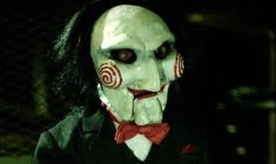 JIGSAW KILLER: The Jigsaw Killer is a fictional character in the Saw franchise, the most popular movie series since James Bond. Jigsaw made his debut appearance as the primary antagonist in the first film of the series, Saw (2004) and later Saw II, III, IV, V, VI and beyond. He is portrayed by actor Tobin Bell. Jigsaw, introduced in the series as Jonathan Kramer, was a patient dying from an inoperable frontal lobe tumor that had developed from colon cancer. Jigsaw usually creates deadly tests for his subjects, where often a symbolic representation of what could be seen as a flaw in the person’s life. He claimed that he was attempting to help his victims to appreciate their life by jump-starting their survival instincts by placing them in life-threatening situations.
JIGSAW KILLER: The Jigsaw Killer is a fictional character in the Saw franchise, the most popular movie series since James Bond. Jigsaw made his debut appearance as the primary antagonist in the first film of the series, Saw (2004) and later Saw II, III, IV, V, VI and beyond. He is portrayed by actor Tobin Bell. Jigsaw, introduced in the series as Jonathan Kramer, was a patient dying from an inoperable frontal lobe tumor that had developed from colon cancer. Jigsaw usually creates deadly tests for his subjects, where often a symbolic representation of what could be seen as a flaw in the person’s life. He claimed that he was attempting to help his victims to appreciate their life by jump-starting their survival instincts by placing them in life-threatening situations.
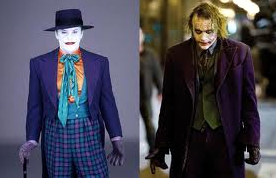 JOKER, THE: The Joker is a comic book super-villain published by DC Comics and appearing as the archenemy of Batman. Created by Jerry Robinson, Bill Finger and Bob Kane, the character first appeared in Batman #1 (1940). Throughout his comic book appearances, the Joker is portrayed as a master criminal whose characterisation has varied from that of a violent psychopath to a goofy trickster-thief. He is the archenemy of Batman, having been directly responsible for numerous tragedies in Batman’s life, including the paralysis of Barbara Gordon (Batgirl) and the death of Jason Todd, the second Robin. Throughout the character’s long history, there have been several different origin tales – they most commonly depict him as falling into a vat of chemical waste, which bleaches his skin and turns his hair green and his lips bright red, giving him the appearance of a clown. The Joker has been portrayed by Cesar Romero in the Batman television series, Jack Nicholson in Tim Burton’s Batman (1989), and Heath Ledger in Christopher Nolan’s The Dark Night (2008), which posthumously earned Ledger an Oscar for Best Supporting Actor. Both Larry Storch and Mark Hamill have provided the voice for the character in animated form. As one of the most iconic and recognized villains in popular media, The Joker was ranked Number One in Wizard’s list of the Hundred Greatest Villains Of All Time. He was also Number Two in IGN’s list of the Top Hundred Comic Book Villains of All Time List, was ranked Number Eight in the Greatest Comic Book Characters in History list by Empire Magazine (being the highest ranking villain on the list) and was listed as the fifth Greatest Comic Book Character Ever in Wizard Magazine’s Two Hundred Greatest Comic Book Characters Of All Time list, also the highest villain on the list.
JOKER, THE: The Joker is a comic book super-villain published by DC Comics and appearing as the archenemy of Batman. Created by Jerry Robinson, Bill Finger and Bob Kane, the character first appeared in Batman #1 (1940). Throughout his comic book appearances, the Joker is portrayed as a master criminal whose characterisation has varied from that of a violent psychopath to a goofy trickster-thief. He is the archenemy of Batman, having been directly responsible for numerous tragedies in Batman’s life, including the paralysis of Barbara Gordon (Batgirl) and the death of Jason Todd, the second Robin. Throughout the character’s long history, there have been several different origin tales – they most commonly depict him as falling into a vat of chemical waste, which bleaches his skin and turns his hair green and his lips bright red, giving him the appearance of a clown. The Joker has been portrayed by Cesar Romero in the Batman television series, Jack Nicholson in Tim Burton’s Batman (1989), and Heath Ledger in Christopher Nolan’s The Dark Night (2008), which posthumously earned Ledger an Oscar for Best Supporting Actor. Both Larry Storch and Mark Hamill have provided the voice for the character in animated form. As one of the most iconic and recognized villains in popular media, The Joker was ranked Number One in Wizard’s list of the Hundred Greatest Villains Of All Time. He was also Number Two in IGN’s list of the Top Hundred Comic Book Villains of All Time List, was ranked Number Eight in the Greatest Comic Book Characters in History list by Empire Magazine (being the highest ranking villain on the list) and was listed as the fifth Greatest Comic Book Character Ever in Wizard Magazine’s Two Hundred Greatest Comic Book Characters Of All Time list, also the highest villain on the list.
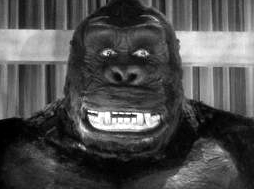 KING KONG: Gigantic ape discovered on Skull Island in the Pacific Ocean and shipped to America as a circus attraction. Kong breaks his chains, runs amok in New York, climbs the Empire State Building, and is eventually killed by the machine-gun fire of fighter planes. The film King Kong (1933) is the most famous beast-fable of the twentieth century. It starred Fay Wray as the delectable young lady who softens Kong’s heart, and is carried to the top of the skyscraper in his hairy fist. The story was by Merian Cooper and Edgar Wallace in collaboration with scriptwriters James Creelman and Ruth Rose, and the animation of Kong himself was achieved by special effects genius Willis O’Brien. The movie inspired several sequels and imitations, such as Son Of Kong (1934) and Mighty Joe Young (1949). Two Japanese films about the great ape are King Kong Versus Godzilla (1962) and King Kong Escapes (1967). There was also an animated television series in 1966 about Kong’s adventures. King Kong itself has been remade twice, once in 1976 with Jessica Lange in the Fay Wray role and Rick Baker in the monkey suit, and in 2005 with Naomi Watts and starring actor Andy Serkis in the motion-captured role of Kong.
KING KONG: Gigantic ape discovered on Skull Island in the Pacific Ocean and shipped to America as a circus attraction. Kong breaks his chains, runs amok in New York, climbs the Empire State Building, and is eventually killed by the machine-gun fire of fighter planes. The film King Kong (1933) is the most famous beast-fable of the twentieth century. It starred Fay Wray as the delectable young lady who softens Kong’s heart, and is carried to the top of the skyscraper in his hairy fist. The story was by Merian Cooper and Edgar Wallace in collaboration with scriptwriters James Creelman and Ruth Rose, and the animation of Kong himself was achieved by special effects genius Willis O’Brien. The movie inspired several sequels and imitations, such as Son Of Kong (1934) and Mighty Joe Young (1949). Two Japanese films about the great ape are King Kong Versus Godzilla (1962) and King Kong Escapes (1967). There was also an animated television series in 1966 about Kong’s adventures. King Kong itself has been remade twice, once in 1976 with Jessica Lange in the Fay Wray role and Rick Baker in the monkey suit, and in 2005 with Naomi Watts and starring actor Andy Serkis in the motion-captured role of Kong.
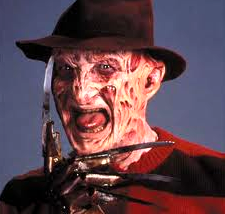 KRUEGER, FREDDY: A fictional character from the Nightmare On Elm Street series of films. He first appears in Wes Craven’s A Nightmare On Elm Street (1984) as a disfigured, dream stalker who uses a glove armed with razors to kill children and teenagers in their dreams, which ultimately results in their death in the real world. He was created by Wes Craven, and has been portrayed by Robert Englund in all of the Nightmare On Elm Street films, as well as the television series. Freddy is undead, and can attack his victims from within their own dreams. He is commonly identified by his burned, disfigured face, red and green striped sweater, brown fedora, and trademark metal-clawed brown leather glove. Wizard magazine rated him the fourteenth greatest villain, a British television channel listed him eighth, and the American Film Institute ranked him fortieth on its Hundred Heroes And Villains list. Actor Robert Englund feels that the character represents neglect, particularly the neglect suffered by children. Jackie Earle Haley has been cast as Freddy Krueger in the 2010 reboot of the film franchise.
KRUEGER, FREDDY: A fictional character from the Nightmare On Elm Street series of films. He first appears in Wes Craven’s A Nightmare On Elm Street (1984) as a disfigured, dream stalker who uses a glove armed with razors to kill children and teenagers in their dreams, which ultimately results in their death in the real world. He was created by Wes Craven, and has been portrayed by Robert Englund in all of the Nightmare On Elm Street films, as well as the television series. Freddy is undead, and can attack his victims from within their own dreams. He is commonly identified by his burned, disfigured face, red and green striped sweater, brown fedora, and trademark metal-clawed brown leather glove. Wizard magazine rated him the fourteenth greatest villain, a British television channel listed him eighth, and the American Film Institute ranked him fortieth on its Hundred Heroes And Villains list. Actor Robert Englund feels that the character represents neglect, particularly the neglect suffered by children. Jackie Earle Haley has been cast as Freddy Krueger in the 2010 reboot of the film franchise.
 KURTZ: Tortured villain of Joseph Conrad‘s novella Heart Of Darkness (1899). The story is narrated by Marlow, who tells of his journey to a remote part of Central Africa (apparently the Belgian Congo, although it’s not named in Conrad’s text). Kurtz is a successful agent for a company of ivory traders, he enjoys god-like power over his native workers, but this has been bought at a terrible price. He has learned to employ the most barbaric methods, including human sacrifice, and dies with the words “The horror, the horror” on his lips. The character reappears as Colonel Kurtz, a crazed American who has created a savage fiefdom in the jungles of Cambodia, in Francis Ford Coppola’s remarkable film Apocalypse Now (1979) played by Marlon Brando. 1993 saw a more faithful version of the story with Tim Roth as Marlow and John Malkovich as Kurtz.
KURTZ: Tortured villain of Joseph Conrad‘s novella Heart Of Darkness (1899). The story is narrated by Marlow, who tells of his journey to a remote part of Central Africa (apparently the Belgian Congo, although it’s not named in Conrad’s text). Kurtz is a successful agent for a company of ivory traders, he enjoys god-like power over his native workers, but this has been bought at a terrible price. He has learned to employ the most barbaric methods, including human sacrifice, and dies with the words “The horror, the horror” on his lips. The character reappears as Colonel Kurtz, a crazed American who has created a savage fiefdom in the jungles of Cambodia, in Francis Ford Coppola’s remarkable film Apocalypse Now (1979) played by Marlon Brando. 1993 saw a more faithful version of the story with Tim Roth as Marlow and John Malkovich as Kurtz.
 Horror News | HNN Official Site | Horror Movies,Trailers, Reviews
Horror News | HNN Official Site | Horror Movies,Trailers, Reviews
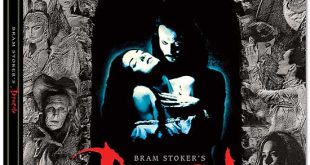
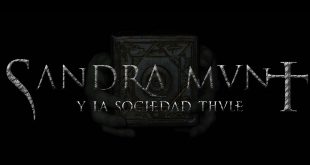

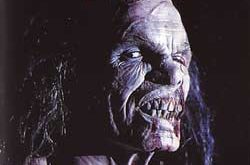
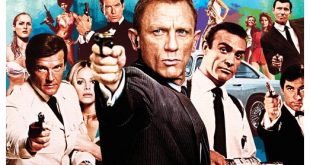
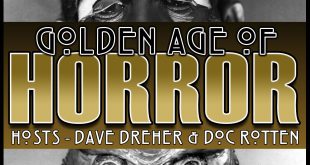
Uriah Heep was based on the real Hans Christian Andersen, who stayed with Charles Dickens for a time and was a very annoying guest!